Bif. Canfranc – Canfranc
CHARACTERISTICS
- OUT OF SERVICEEstación de Plasencia del Monte (P.K. 15,600) / VM
- Estación de Ayerbe (UTM 30T 691086 4682932); (P.K. 35,000) / VM
- OUT OF SERVICEEstación de Riglos-Concilio (P.K. 41,700) / VM
- Estación de Riglos (UTM 30T 686840 4690541); (P.K. 45,000) / VM
- Estación de Santa María la Peña (UTM 30T 689686 4694573); (P.K. 53,400) / VM
- Estación de Anzánigo (UTM 30T 693966 4697236); (P.K. 59,400) / VM
- Estación de Caldearenas-Aquilué (UTM 30T 705800 4696985); (P.K. 72,500) / VM
- Estación de Sabiñánigo (UTM 30T 715762 4710902); (P.K. 94,300) / VM
- Estación de Jaca (UTM 30T 702001 4716846); (P.K. 110,200) / VM
- Estación de Castiello Pueblo (UTM 30T 701297 4722328); (P.K. 5,800) / VM
- Estación de Villanúa-Letranz (UTM 30T 702877 4729265); (P.K. 17,400) / VM
- Estación de Canfranc (UTM 30T 703436 4736204); (P.K. 24,700) / VM
In the mid-19th century, representatives of the Aragonese bourgeoisie drew up the manifesto ‘The Aragonese to the Spanish nation’. This document emphasised the advantages of establishing a railway connection with France passing through Zaragoza, Jaca and Canfranc. This initiative sought to position Zaragoza as a key logistical node in the railway network, as it is located at the crossroads between the Valencian coast with Pamplona and the Basque capitals, and Catalonia with the interior, towards Madrid.
The agreement between France and Spain for the construction of a railway across the Pyrenees through Somport would not be signed until 1885, thus fulfilling the demands expressed decades earlier by Aragonese society. This agreement marked the beginning of an ambitious project that would allow a railway connection between the two countries.
Agreement between France and Spain for the construction of a railway across the Pyrenees [...]
Initially the international station was planned to be in Forges d’Abel, however, after the modification of the 1907 Convention, its location was moved to Canfranc.
Work on the Somport tunnel that would cross the border began at both ends in 1908, just a few days apart. Both fronts connected in October 1912, with the tunnel finally completed at the end of 1915.
During the construction of the line, which began in 1922 under the project of the engineer Fernando Ramírez de Dampierre, various challenges arose, particularly in the section between Jaca and Canfranc. This section had a difference in altitude of 400 metres in just 21 kilometres. To resolve this part of the route, a large investment was needed in the construction of tunnels and viaducts. In addition, there were additional problems with the construction of the international station at Canfranc due to its location very close to the course of the river Aragón. In fact, it was necessary to divert the course of the river and carry out major earthworks to level the terrain. The construction work lasted six years until its completion in May 1928.
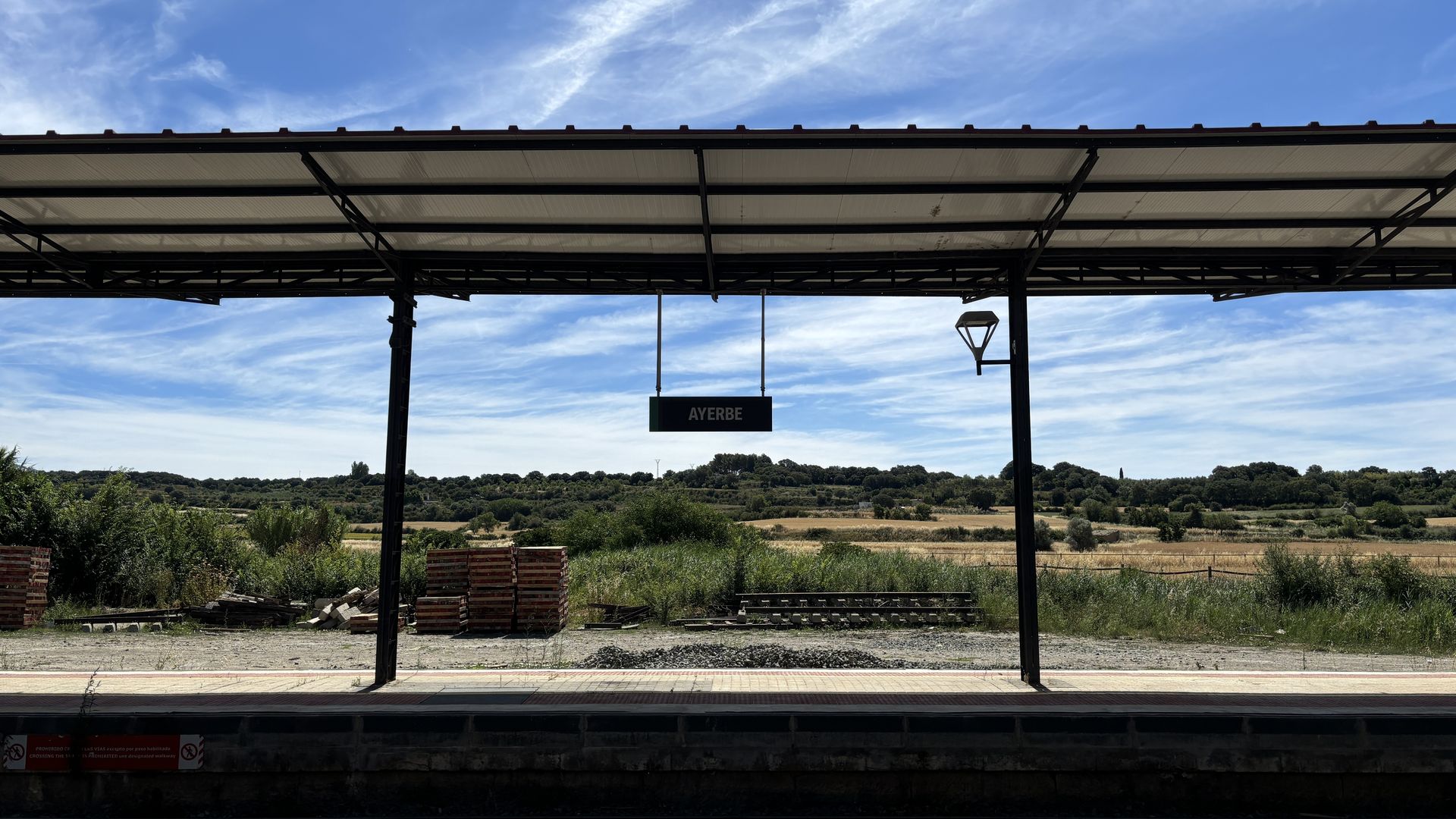
Estación de Ayerbe (Huesca)
A few months later, seventy-five years after the initial idea was first mooted by the Aragonese bourgeoisie, the Canfranc international station, the Somport railway tunnel and the cross-border line were officially opened. This historic event was attended by the highest dignitaries from both countries, King Alfonso XIII for Spain and French President Gaston Dumergue.
During the construction of the line, which began in 1922 under the project of the engineer Fernando Ramírez de Dampierre, various challenges arose, particularly in the section between Jaca and Canfranc.
However, the wars of the 20th century affected the operation of the line. The Spanish Civil War and the Second World War interrupted international traffic on several occasions. In August 1936, the military authorities decided to suspend traffic with France. As a result, the line remained closed until 1940. Then, after the end of the Spanish Civil War and during the Second World War, the line experienced a period of intense activity. Large quantities of goods arrived from Portuguese ports and were destined for Switzerland, a neutral country in the conflict, passing through Spain and France, mostly via Canfranc. The liberation of France by the allied forces in 1944 caused a new closure, which would not be reversed until 1949.
Despite the fact that the line had some activity in the middle decades of the 20th century, its operation was a loss for the SNCF, and it began to close some substations that provided power to the catenary and to limit maintenance work. An unfortunate derailment and the consequent collapse of the L’Estanguet bridge (France) in 1970 marked the end of rail communication between Spain and France via Canfranc. For decades, France refused to undertake the work necessary to restore the line.
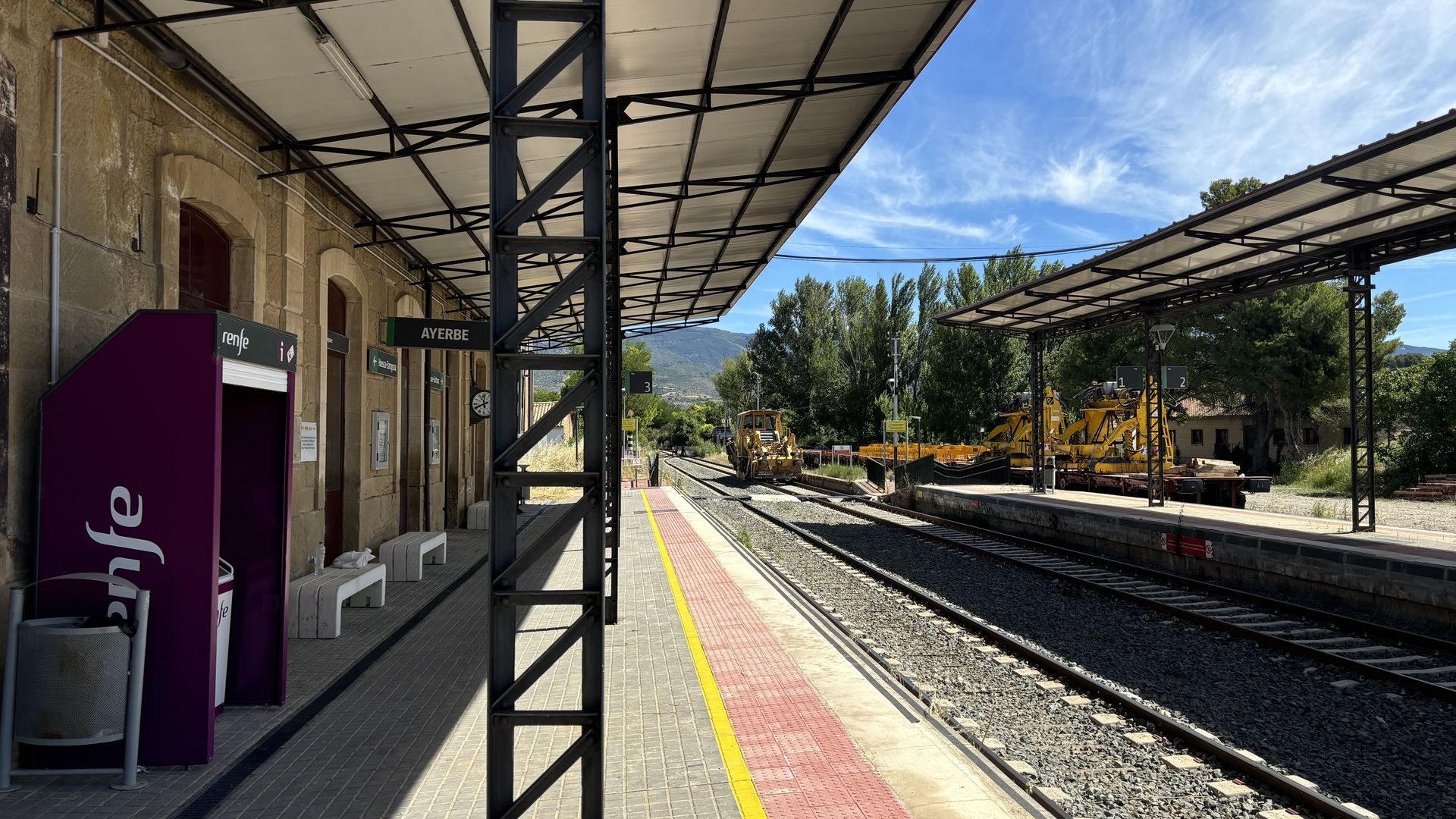
Estación de Ayerbe (Huesca)
In April 1994 a collaboration agreement was signed between the Government of Aragon, RENFE and the Town Council of Canfranc to promote the actions necessary to carry out an urban redevelopment of the area around the station.
Over the following decades, the conditions of use of both the historic station and the surrounding railway land were defined, with the aim of guaranteeing the railway function and providing the whole area with land for public use, such as green areas and facilities. The Government of Aragon also acquired the Canfranc station from ADIF and the necessary urban planning instruments were approved for the urban rehabilitation and comprehensive restoration of the historic building.
In 2021 the work was inaugurated, allowing the arrival of travellers from Zaragoza to Canfranc and overnight stays in an exclusive hotel occupying the facilities of the historic building. [1] [2] . In 2024 there are medium-distance services operated by Renfe, with two daily connections from Zaragoza to Canfranc.
Work on this project was inaugurated in 2021 [...]
The section corresponding to this study, which runs from Huesca to Canfranc, passes through some of the most scenically beautiful landscapes in the Pyrenees and Pre-Pyrenees. In the region of Hoya de Huesca, the cereal-growing plain gives way to a pre-Pyrenean landscape bathed by the river Gállego, where the natural monuments of the Mallos de Riglos, Agüero and Peña Rueba stand out, which the train goes round on the right, leaving the La Peña reservoir on the left. The route then enters the Alto Gállego region, travelling parallel to the river at all times through areas of great beauty, until it reaches the Sabiñánigo reservoir. From there, it passes through the picturesque area of Val Ancha and Val Estrecha until it reaches Jaca, where it follows the course of the river Aragón, now in the region of La Jacetania, and ascends through a beautiful enclosed valley to Canfranc. All the stations along this section have the same architectural style and, for the most part, are in an acceptable state of repair.
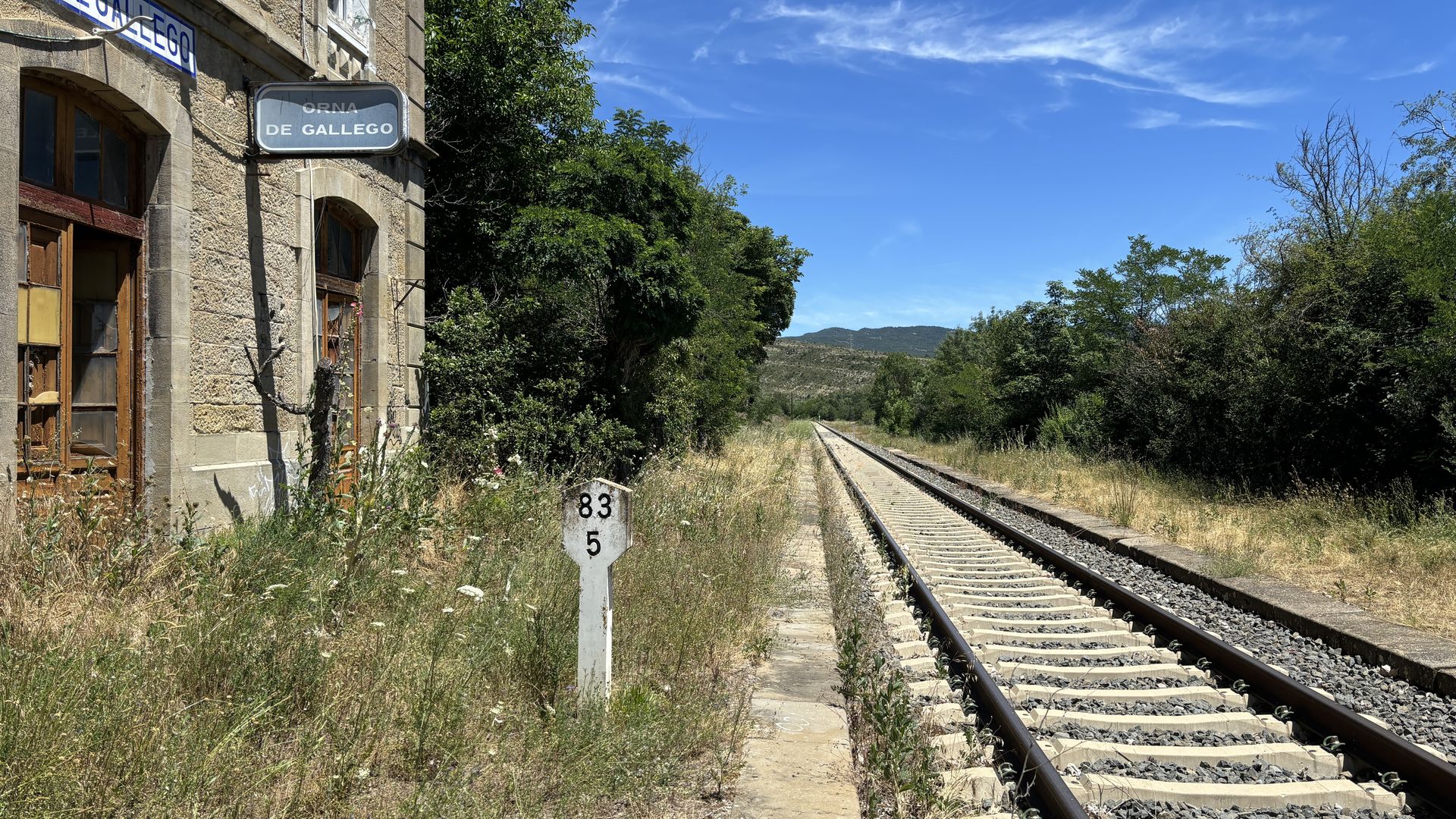
Apeadero de Orna de Gállego (Huesca)
The value of the landscape around this route is extraordinary and there is great potential for the development of nature tourism. In fact, in 2024 the company Alsa presented a tourist train project for the spring-summer season with three daily trips, the Canfranc Express, which will operate a historic train between the stations of Sabiñanigo and Canfranc with stops in Jaca, Castiello de Jaca and Villanúa.This train would start running in 2025, once the renovation and modernisation works currently being carried out by Adif along the line have been completed.
Category C1.
Non-electrified track with wooden sleepers in need of repair.
Photographic report
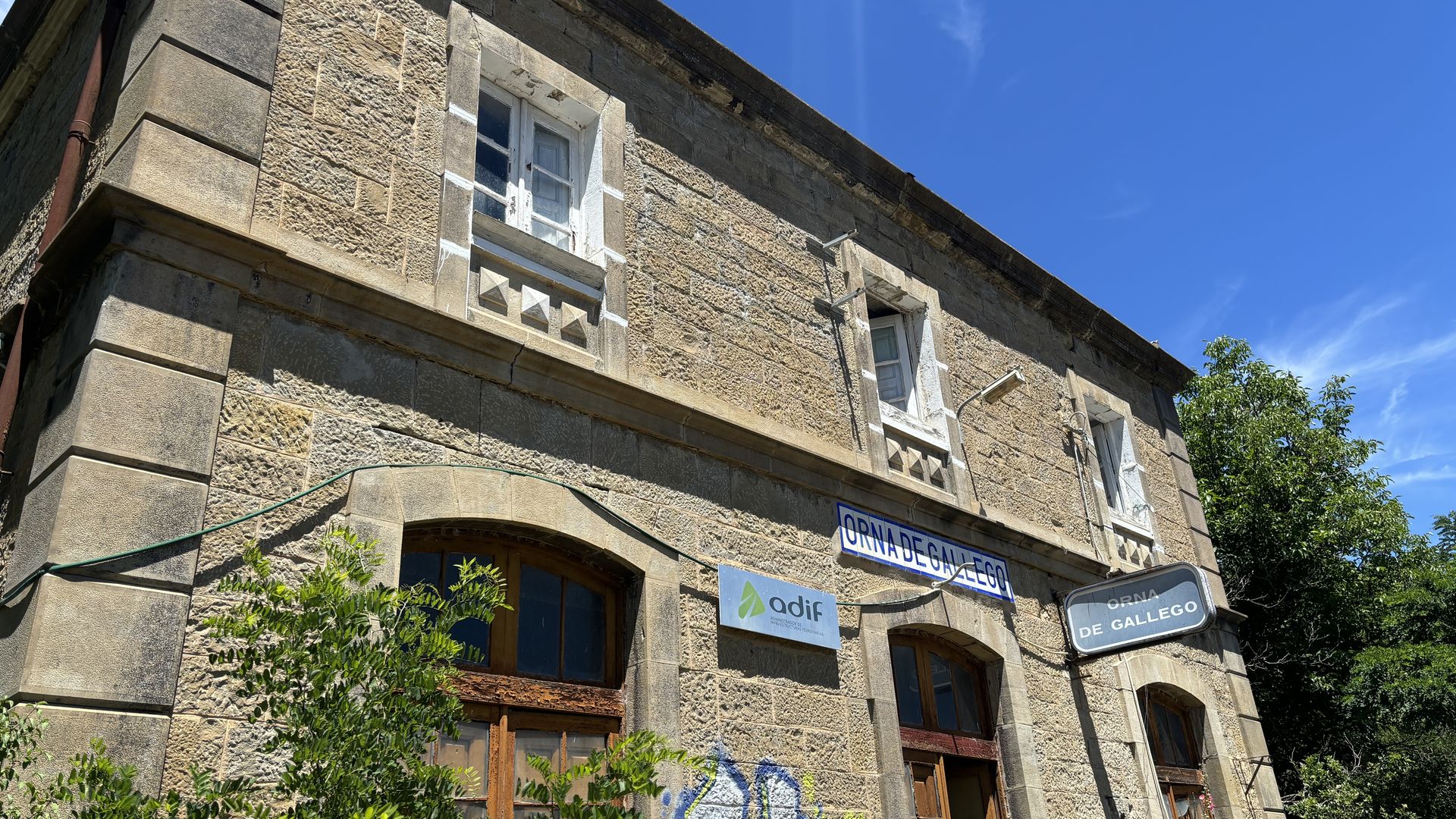
Apeadero de Orna de Gállego (Huesca)
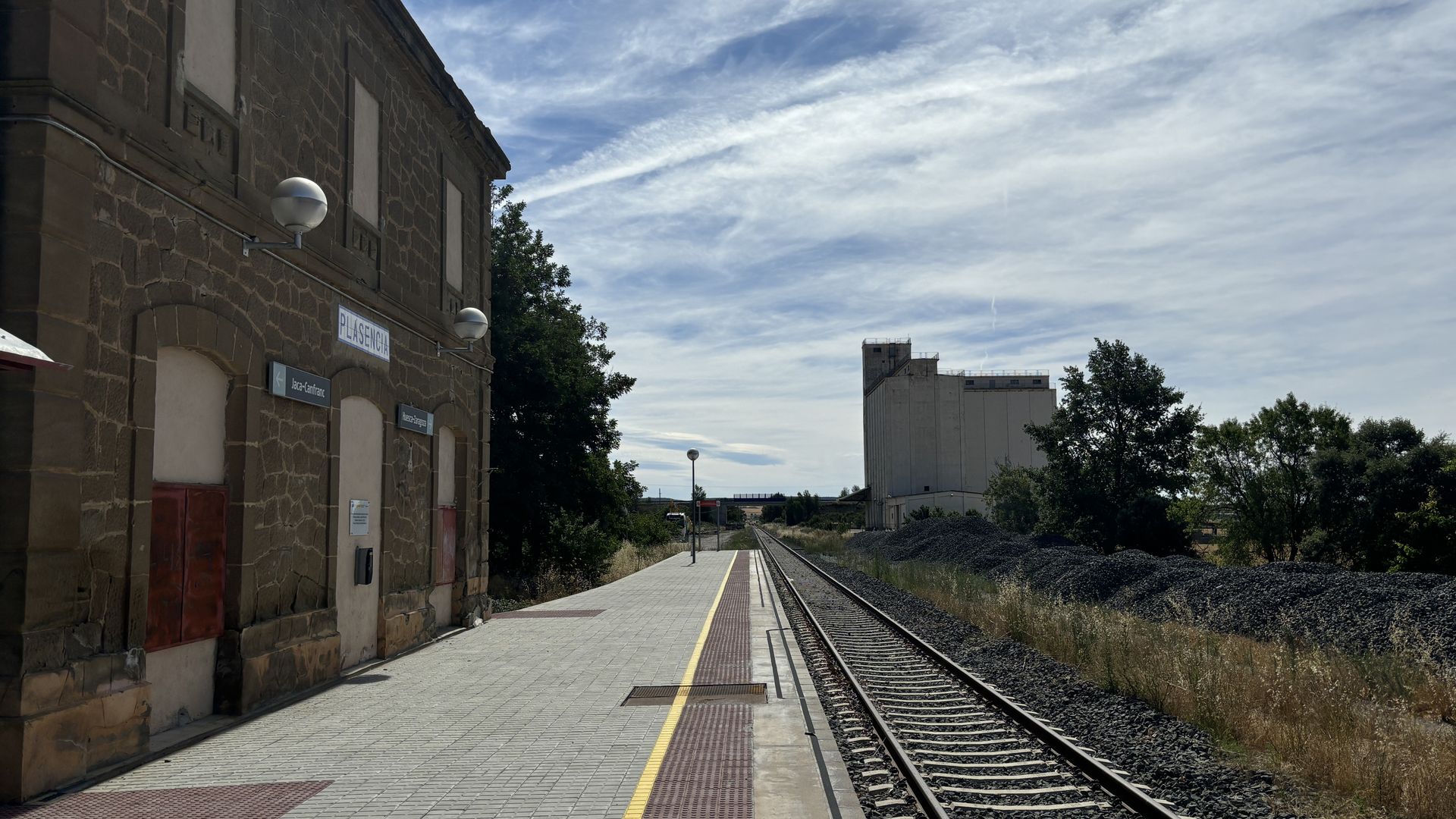
Apeadero de Plasencia del Monte (Huesca)
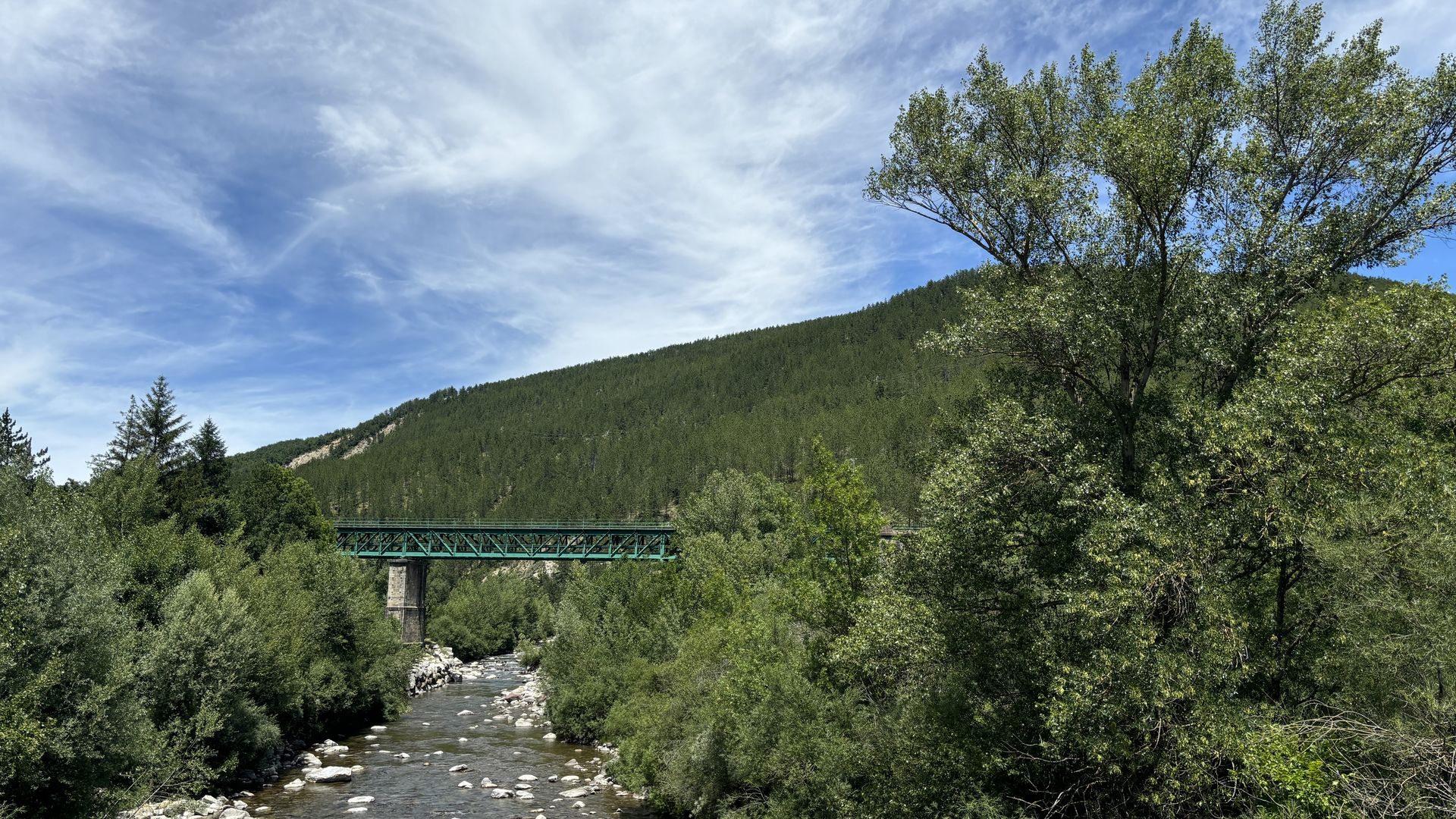
Puente sobre el río Aragón (Castiello de Jaca, Huesca)
References
-
[1] «Historia del Canfranc - Estación de Canfranc», Estación de Canfranc, 04-ago-2018. [En línea]. Ver referencia
-
[2] A. Borruel, «La historia del Canfranero», Cima Norte, 25-may-2019. [En línea]. Ver referencia